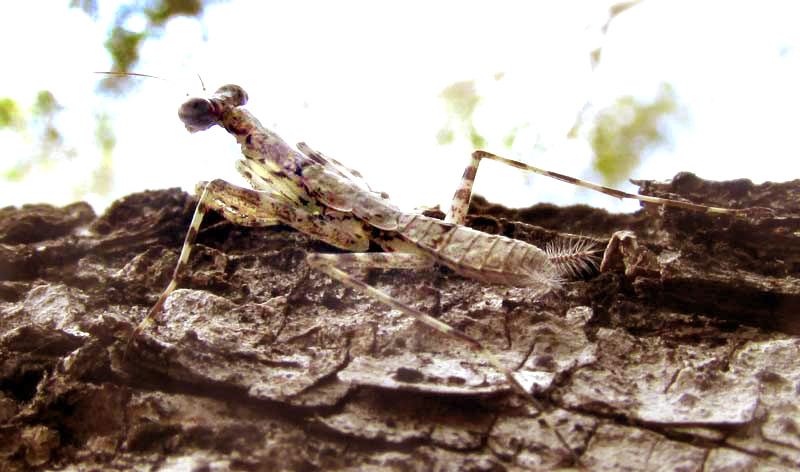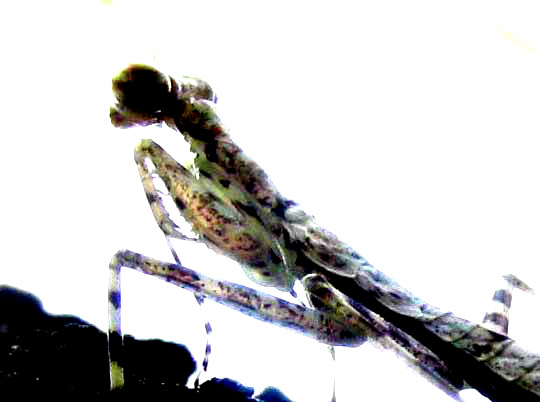Excerpts from Jim Conrad's
Naturalist Newsletter

from the May 24, 2015 Newsletter issued from Río Lagartos, on the Yucatan Peninsula's northern coast (~N21.60°, ~W88.16°), Yucatán state, MÉXICO
LICHEN MANTIS
It's so hot and dry here, and has been so for so long, that I'm amazed anytime an insect appears that isn't feeding on nectar. Thus it was good to see the little mantis shown on a fallen tree limb above. The curious feathery items at the rear of the abdomen are cerci, presumably used for smelling/tasting/feeling the environment.
This was a nervous, fast-moving little critter -- about an inch long, 25mm -- who with its good camouflage could disappear in a flash. Still, I managed to get a little closer before losing him, as shown below:

Volunteer identifier Bea in Ontario pegged this as LITURGUSA MAYA, sometimes known as the Lichen Mantis, found from Mexico south through Central America to southern Peru.
The name led me to an online copy of a revision of the genus Liturgusa, which described species in the genus as "... bark dwelling species, which live entirely on the trunks and branches of trees and run extremely fast." The revision also made the point that the taxonomy of the species isn't well known, that Liturgusa maya is extremely variable, and that what's now called Liturgusa maya may well consist of a complex of "cryptic species," which are species so similar to one another that you don't know they're separate species until gene analysis is done.
Spotting this little mantid during such a hot, dry, relatively insect-less season brought forth a question: What on earth are they eating? There must be prey so tiny and invulnerable to drying out that I just don't see them.